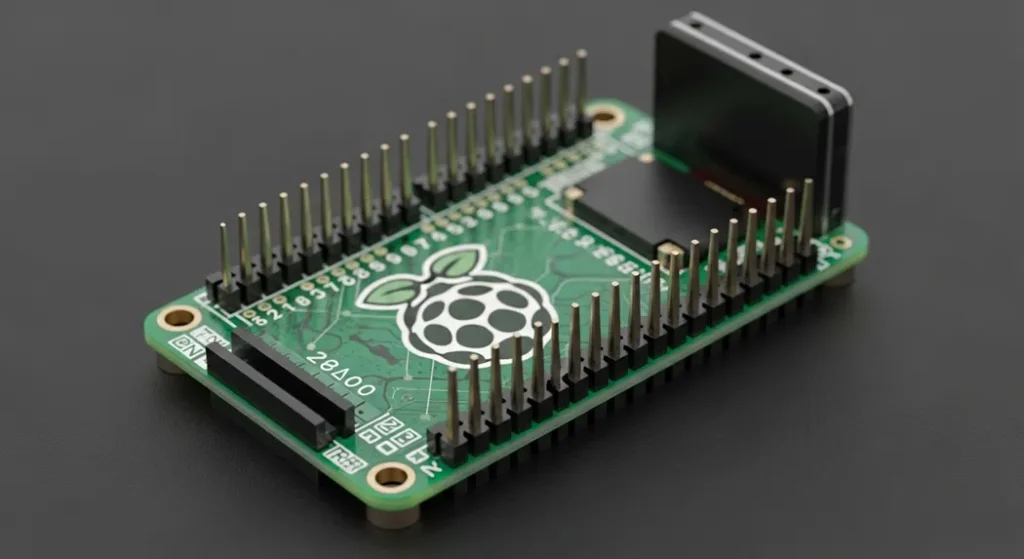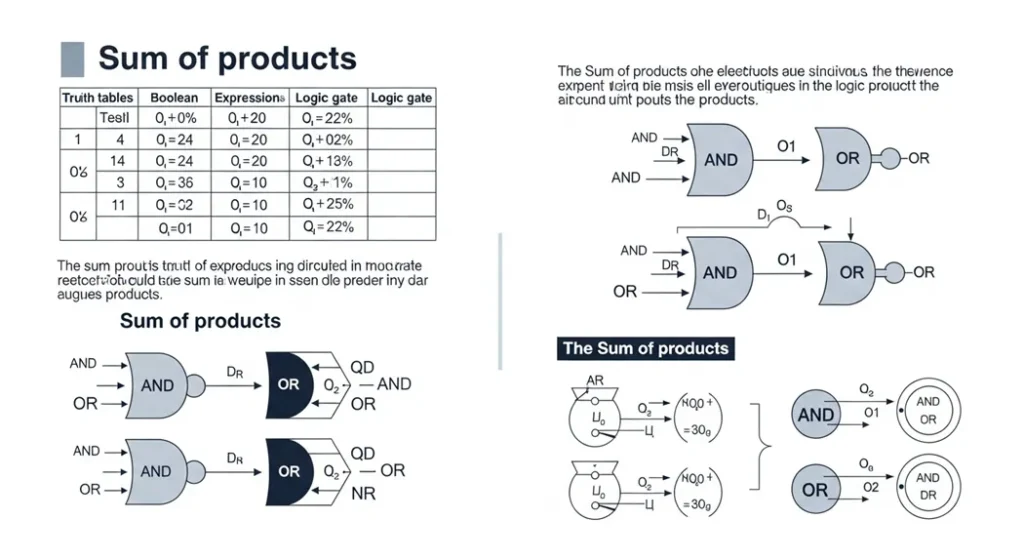In the world of electronics and DIY projects, two of the most popular devices that enthusiasts, developers, and hobbyists alike encounter are the ESP32 and the Raspberry Pi. These two boards have become go-to solutions for everything from building small IoT devices to creating full-scale home automation systems, robotics, and even personal computers. However, while both have revolutionized how we think about microcontrollers and computing, the question remains: Which one is right for your project?
In this comprehensive guide, we will dive deep into the difference between ESP32 and Raspberry Pi, offering a thorough comparison based on key features, applications, performance, and power efficiency. This post is designed to help both beginners and experienced developers make an informed decision when choosing between the ESP32 and Raspberry Pi for their next project.
What is ESP32?
The ESP32 is a powerful microcontroller developed by Espressif Systems. It is designed to be an affordable and efficient solution for embedded systems, offering built-in Wi-Fi and Bluetooth connectivity, which makes it ideal for Internet of Things (IoT) applications. The ESP32 is built around a dual-core processor and provides extensive I/O options, including GPIO pins, PWM, ADC, and DAC capabilities.
If you’re just getting started with electronics or want to understand how basic circuits work, learning about logic gates and their truth tables can be a great foundation before diving into microcontrollers like the ESP32 or computers like the Raspberry Pi.
Key Features of ESP32:
- Dual-core processor with clock speeds up to 240 MHz.
- Built-in Wi-Fi and Bluetooth connectivity, supporting both Bluetooth Classic and BLE (Bluetooth Low Energy).
- Ultra-low power consumption, making it ideal for battery-powered projects.
- Multiple I/O options, including GPIO pins, Pulse Width Modulation (PWM), Analog to Digital Converters (ADC), Digital to Analog Converters (DAC), and much more.
- Compact size with a wide variety of development boards and modules available for various applications.
- Open-source support with extensive libraries and development environments such as the Arduino IDE and ESP-IDF.
The ESP32 shines in applications that require wireless connectivity, low power consumption, and minimal physical space. Its versatility in interfacing with sensors, motors, and other hardware makes it an excellent choice for IoT systems, wearable devices, home automation, and environmental monitoring projects.
What is Raspberry Pi?
The Raspberry Pi, on the other hand, is a full-fledged single-board computer (SBC) that runs a complete operating system (OS), usually Raspberry Pi OS (formerly known as Raspbian). Unlike the ESP32, which is a microcontroller, the Raspberry Pi provides a more robust computing platform capable of running multiple applications simultaneously and interacting with external peripherals like USB devices, displays, and even cameras. This makes the Raspberry Pi an ideal choice for projects that require more processing power and the ability to run applications such as web servers, media centers, and educational tools.

Key Features of Raspberry Pi:
- Broad processing power, with models like the Raspberry Pi 4 featuring a quad-core ARM Cortex-A72 CPU running at 1.5 GHz.
- Multiple USB ports (including USB 3.0), HDMI output, and Ethernet connectivity (on select models), making it capable of handling desktop-like applications.
- Runs a full OS, allowing users to install and run complex software such as web browsers, programming environments, and media players.
- Expandable storage through a microSD card (or USB storage devices), enabling large file storage and data processing.
- Wide range of GPIO pins for hardware interfacing, suitable for robotics, home automation, and educational experiments.
- Large community support and comprehensive documentation, making it easy to find tutorials, solutions, and software libraries.
The Raspberry Pi is perfect for projects that require more computational power, such as running media servers, creating personal computers, learning programming, and building advanced automation systems.
ESP32 vs Raspberry Pi: Key Differences
| Feature | ESP32 | Raspberry Pi |
| Type | Microcontroller with built-in Wi-Fi and Bluetooth | Single-board computer with a full OS |
| Processor | Dual-core processor, 240 MHz | Quad-core ARM Cortex-A72 CPU, up to 1.5 GHz |
| Operating System | Bare-metal or custom firmware | Full-fledged OS (Raspberry Pi OS, Ubuntu, etc.) |
| Connectivity | Wi-Fi, Bluetooth | Wi-Fi, Bluetooth, Ethernet (on certain models) |
| I/O Pins | Numerous GPIO pins (PWM, ADC, DAC, etc.) | GPIO pins, but fewer than the ESP32 |
| Power Consumption | Very low power consumption | Higher power consumption compared to ESP32 |
| Use Case | IoT, embedded systems, battery-powered devices | Home automation, education, media centers |
Performance Comparison: Which is Faster?
| Feature / Spec | ESP32 | Raspberry Pi 4 Model B | Raspberry Pi Zero 2 W |
| CPU | Dual-core Xtensa LX6 @ 240 MHz | Quad-core Cortex-A72 @ 1.5 GHz | Quad-core Cortex-A53 @ 1.0 GHz |
| RAM | ~520 KB SRAM + optional external PSRAM | 2GB, 4GB, or 8GB LPDDR4 | 512MB LPDDR2 |
| Storage | SPI Flash (typically 4MB – 16MB) | microSD card (up to 2TB) | microSD card (up to 512GB) |
| Wi-Fi & Bluetooth | Wi-Fi 802.11 b/g/n, BT v4.2 (BLE supported) | Wi-Fi 802.11ac, BT 5.0 | Wi-Fi 802.11 b/g/n, BT 4.2 |
| GPIOs / I/O Pins | 30–36 GPIOs | 40 GPIOs (multipurpose) | 40 GPIOs |
| Power Consumption | Very low (avg. 80–240 mA @ 3.3V) | Higher (avg. 600–1000 mA @ 5V) | Moderate (avg. 300–500 mA @ 5V) |
| USB Support | USB OTG (1 port) | 4x USB (2 USB 3.0, 2 USB 2.0) | 1x micro USB (OTG) |
| Operating System Support | Bare-metal, FreeRTOS, Arduino, MicroPython | Linux OS (Raspberry Pi OS, Ubuntu, etc.) | Linux OS (Raspberry Pi OS Lite) |
| Processing Power | Low (ideal for microcontroller tasks) | High (suitable for multitasking, apps) | Medium (headless/lightweight tasks) |
| Real-time Capabilities | Yes (built-in via RTOS support) | No native real-time support | No native real-time support |
| Price Range (2025) | $3 – $10 | $35 – $75 (depending on RAM) | ~$15 – $20 |
| Development Use Case | IoT devices, sensor nodes, automation | Desktop, media server, AI/ML, full apps | Lightweight IoT, headless servers |
Which is Faster
| Scenario | Winner |
| General CPU Speed | Raspberry Pi 4 (Much faster) |
| Power Efficiency | ESP32 (Ultra low power) |
| Real-time Performance (e.g., sensors) | ESP32 |
| Full OS, Browsing, App Development | Raspberry Pi 4 |
| Budget IoT Projects | ESP32 |
| Light Linux-based automation (headless) | Raspberry Pi Zero 2 W |
| AI/ML and Computer Vision | Raspberry Pi 4 |
comes to raw performance, the Raspberry Pi takes the lead with its quad-core processor and higher clock speeds, which can go up to 1.5 GHz in the latest models. This gives the Raspberry Pi the ability to run a full operating system and handle complex tasks, including web browsing, media streaming, and server hosting.
However, the ESP32 is not far behind when it comes to real-time processing. With its dual-core processor running at 240 MHz, the ESP32 can handle many real-time tasks, such as sensor data collection, communication via Wi-Fi and Bluetooth, and actuator control, with low latency and minimal resource consumption. The key difference here is that the ESP32 does not run a full operating system and is optimized for specific tasks with custom firmware, making it an ideal candidate for embedded applications.
Practical Use Cases:
- ESP32: Ideal for IoT projects where you need to collect and send sensor data to a cloud server or another device, with low power consumption and real-time response.
- Raspberry Pi: Great for projects that require running full applications or services, such as setting up a home media server, building a web server, or creating an educational tool for programming and learning.
Power Consumption: The Efficiency Factor

One of the most important aspects of choosing between the ESP32 and Raspberry Pi is power consumption. The ESP32 is designed with low power usage in mind, capable of operating in deep sleep mode at just 0.01mA of current consumption. This makes it an excellent choice for battery-operated projects where power efficiency is crucial, such as wearable devices, remote monitoring systems, and smart sensors.
In contrast, the Raspberry Pi, being a full-fledged computer, requires more power. The base model of the Raspberry Pi 4 requires 5V/2.5A of power, and this can increase if you attach peripherals like external hard drives, cameras, or displays. Therefore, while the Raspberry Pi offers more processing power, it’s not as efficient when it comes to energy consumption, especially for projects that need to run on batteries for extended periods.
Best Use Cases Based on Power Consumption:
- ESP32: Low-power, battery-operated IoT devices, remote sensors, wearable tech, and environmental monitoring systems.
- Raspberry Pi: Projects that involve continuous operation, require access to high-speed internet, or need to run complex applications, such as media centers or home automation hubs.
Which One Should You Choose for Your Project?
Deciding between the ESP32 and Raspberry Pi ultimately depends on your project’s requirements. Here are some guidelines to help you decide:
Choose ESP32 if:
- You need low power consumption for battery-operated devices.
- Your project revolves around IoT applications such as smart homes, environmental sensors, or connected devices.
- Real-time performance is crucial (e.g., sensor data processing or actuator control).
- Wireless communication (Wi-Fi/Bluetooth) is essential for your project.
Choose Raspberry Pi if:
- Your project requires high computational power or running a full operating system.
- You need to interface with peripherals such as USB devices, HDMI displays, or cameras.
- You want to create a media center, personal server, or desktop-like experience.
- Your project involves running complex software or multi-tasking, such as building a web server or creating educational tools.
Final Thoughts
In conclusion, both the ESP32 and Raspberry Pi are exceptional boards that cater to different needs. The ESP32 is perfect for IoT applications, embedded systems, and real-time performance with low power consumption. On the other hand, the Raspberry Pi offers a versatile computing environment that is more suited for tasks requiring higher processing power, multitasking, and peripheral connectivity.
Choosing the right device depends on the specific requirements of your project. For battery-operated devices with minimal resource needs, the ESP32 is the better choice. If you’re looking for a full computing platform with the ability to run a variety of applications and interface with numerous peripherals, the Raspberry Pi is the way to go.
Whichever board you choose, both have a strong community of developers, plenty of resources, and endless possibilities for creating innovative projects.
Relevant Resources:




